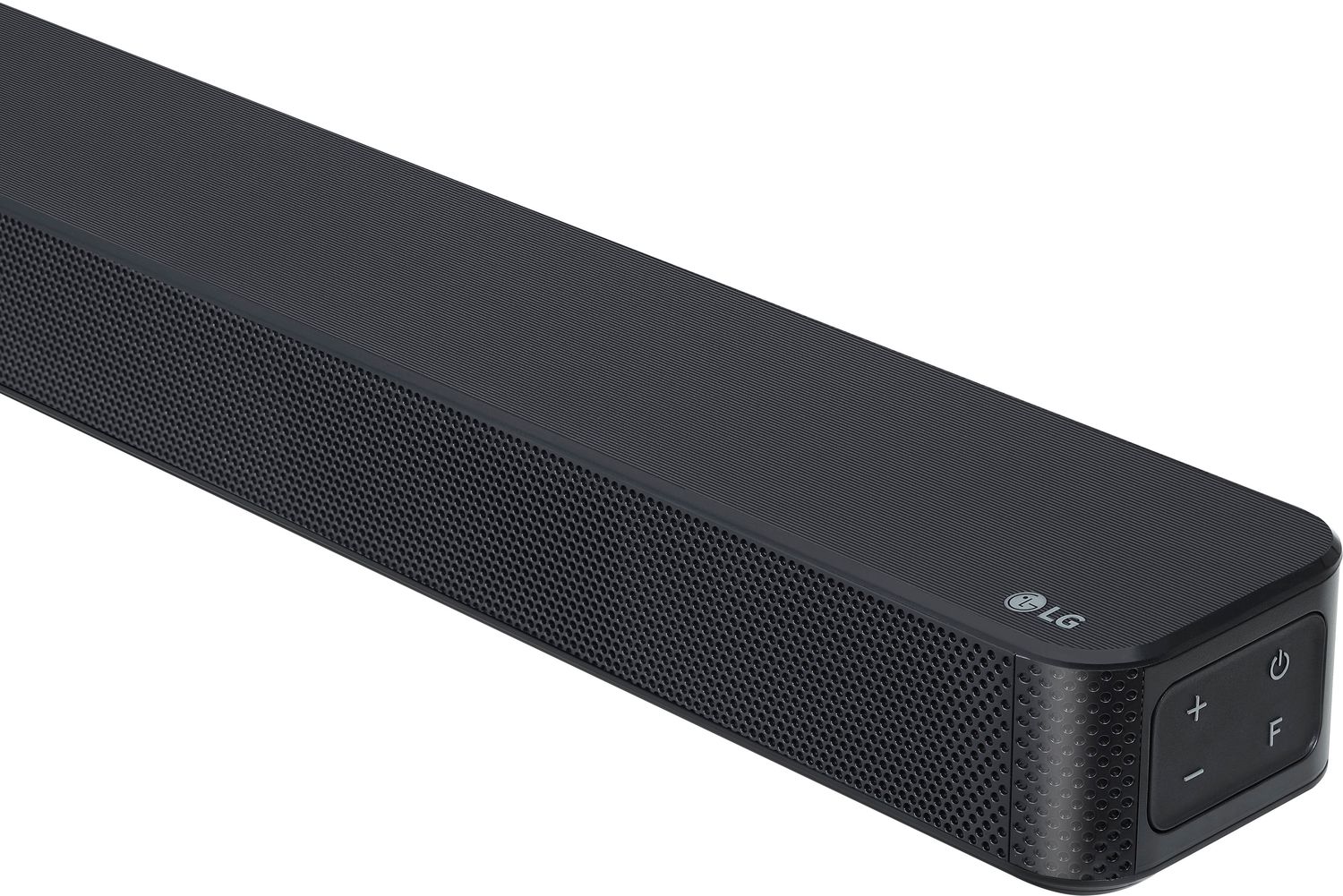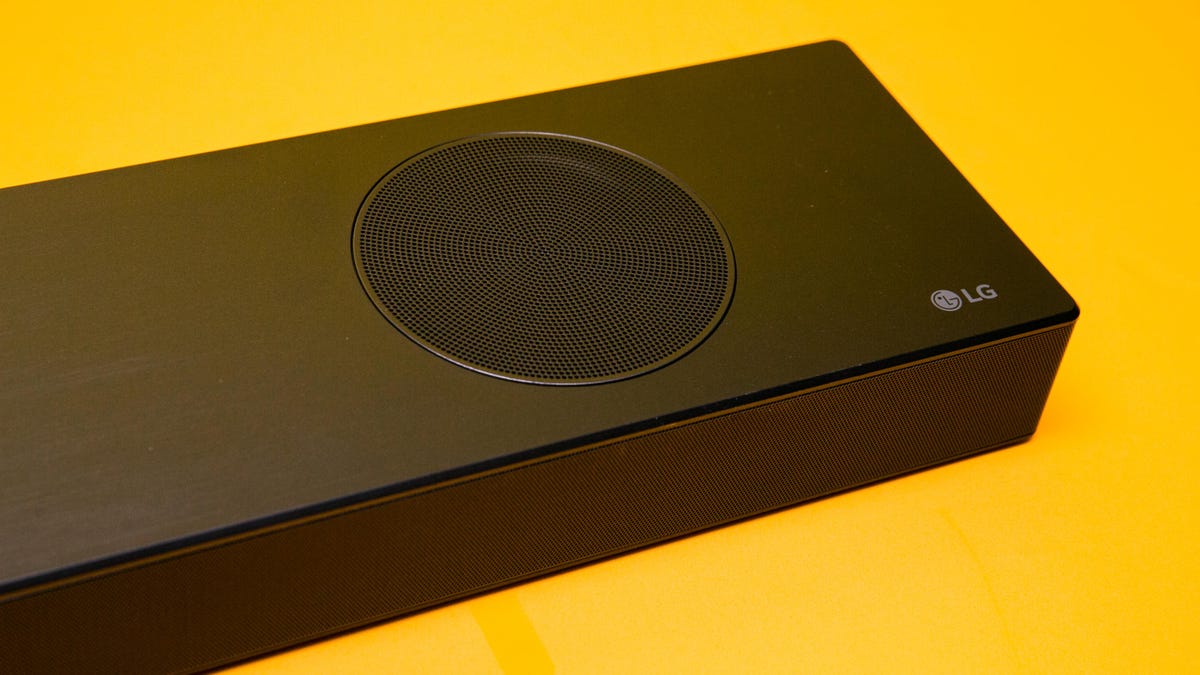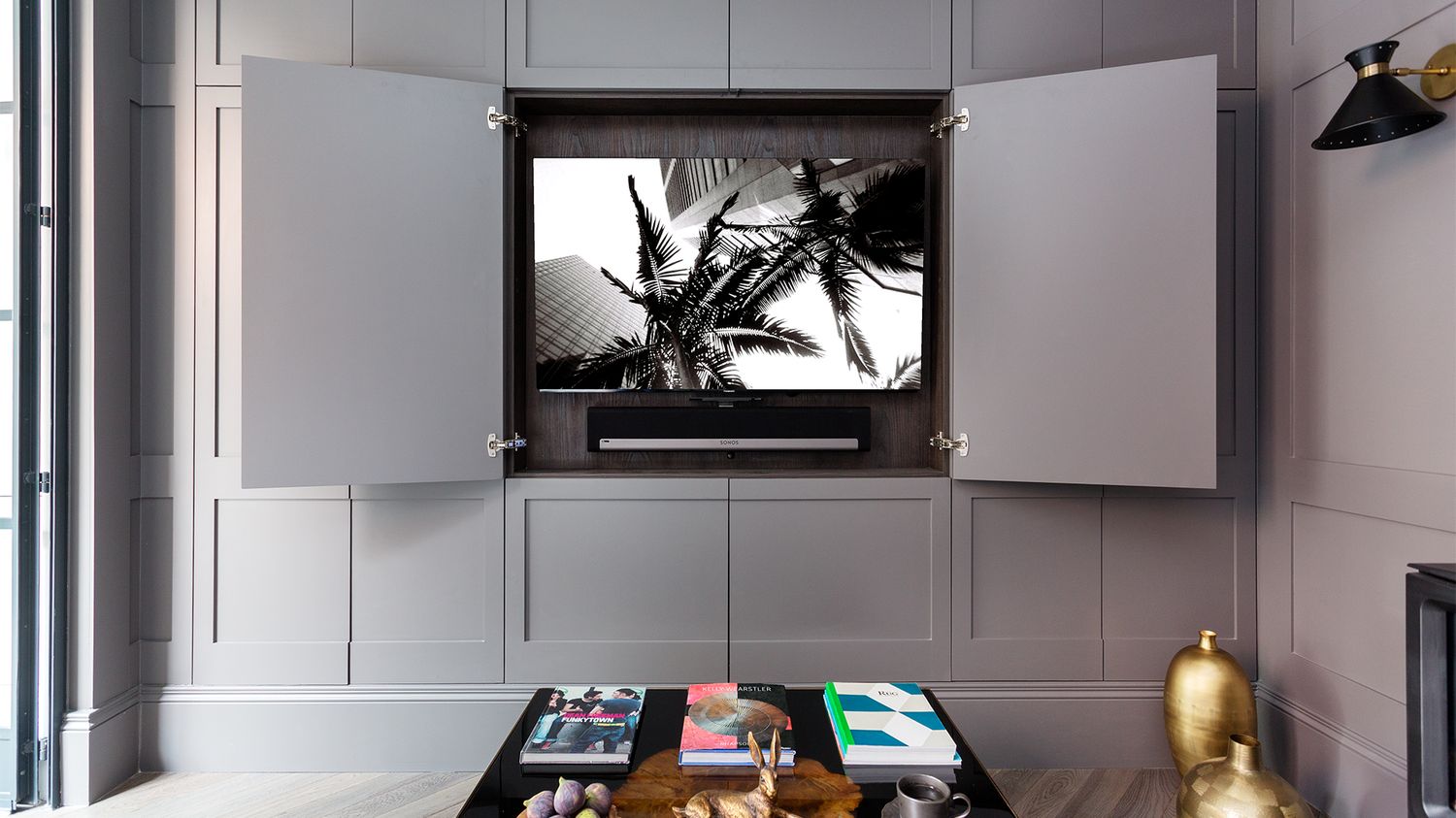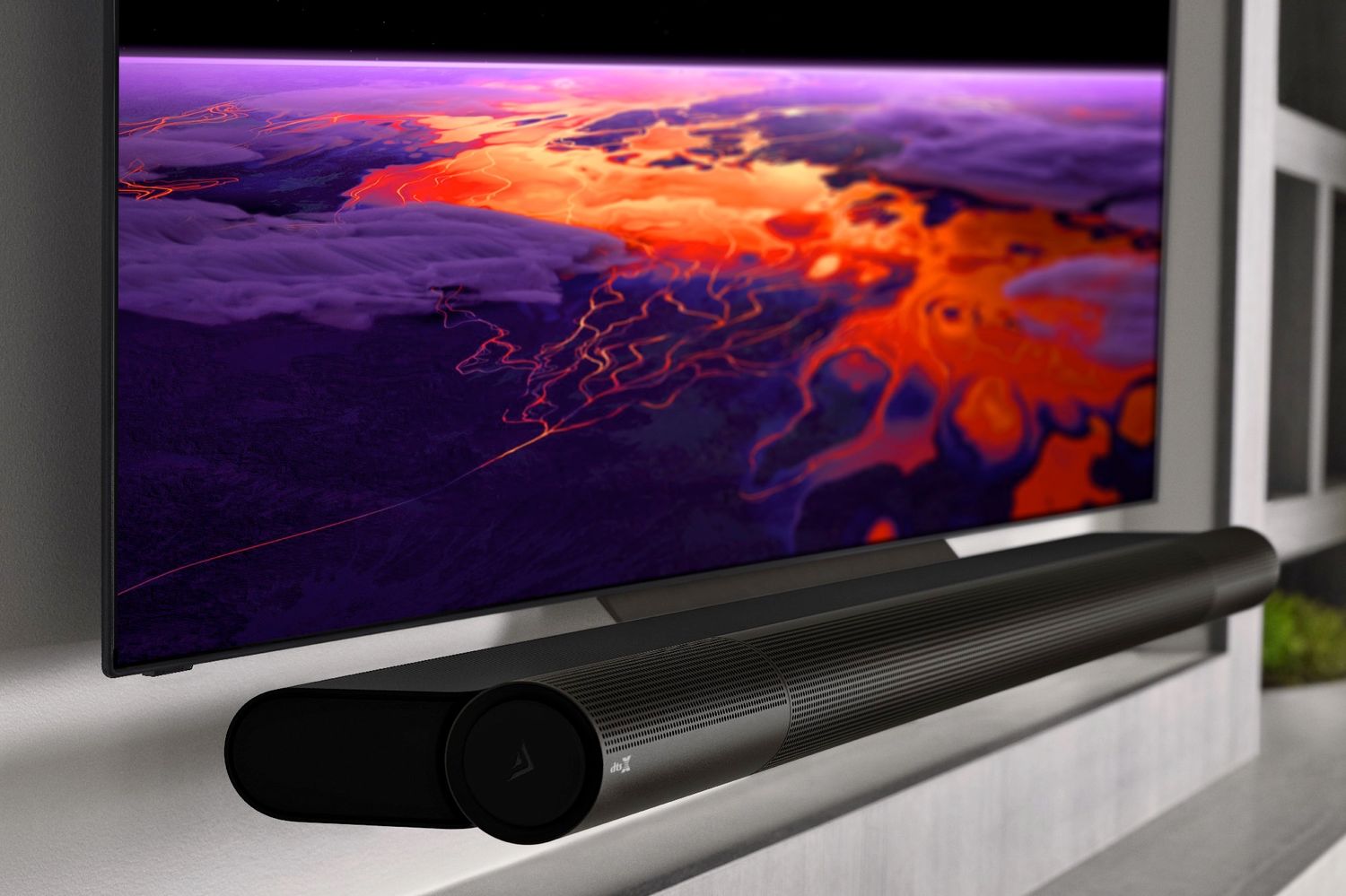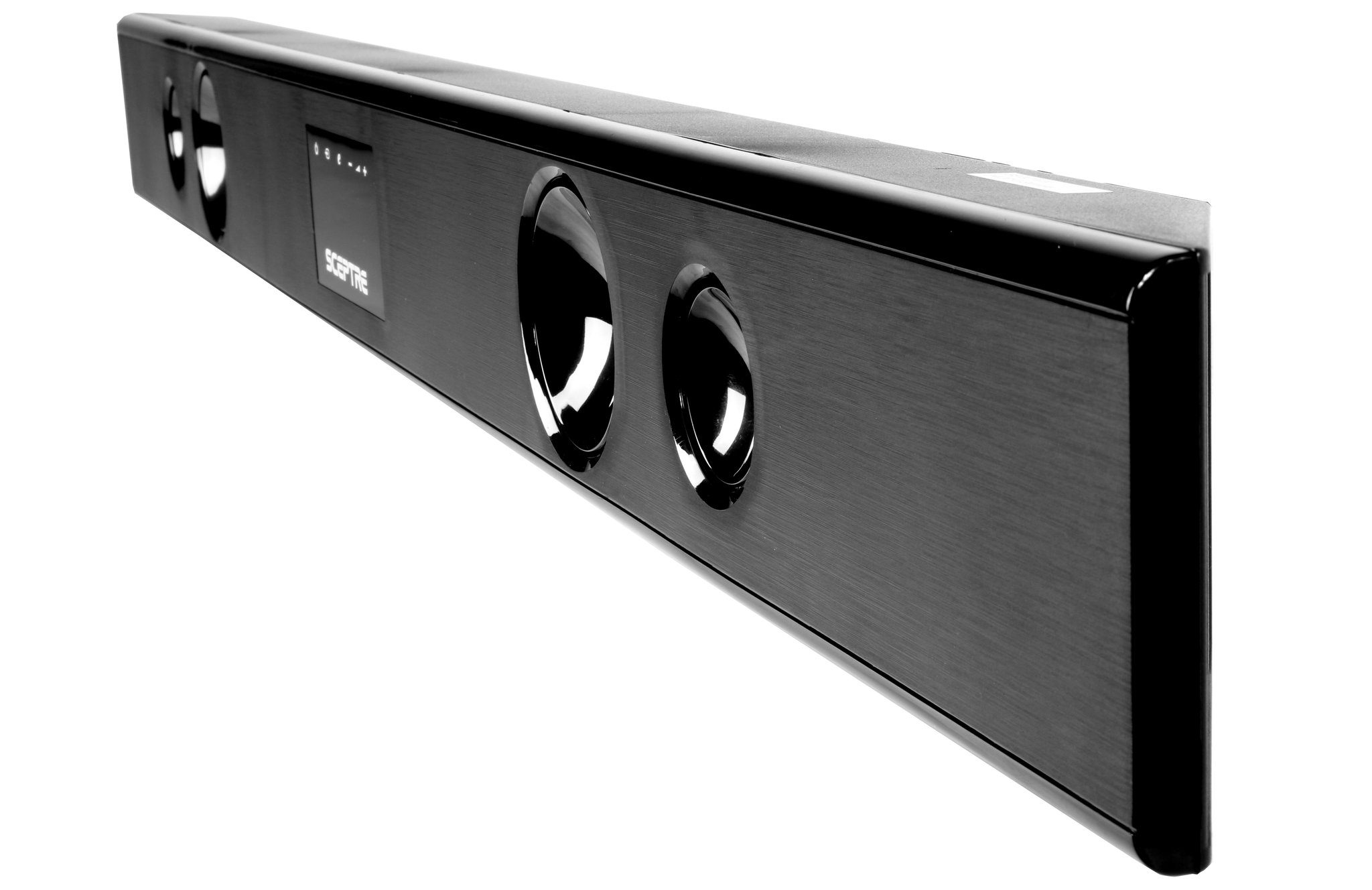Home>Production & Technology>Sound Bar>What To Look For In A Sound Bar


Sound Bar
What To Look For In A Sound Bar
Modified: February 18, 2024
Looking for a sound bar? Discover what features to consider and find the perfect sound bar for your home theater setup.
(Many of the links in this article redirect to a specific reviewed product. Your purchase of these products through affiliate links helps to generate commission for AudioLover.com, at no extra cost. Learn more)
Table of Contents
Introduction
Welcome to our comprehensive guide on what to look for in a sound bar. In recent years, sound bars have gained immense popularity as an essential audio solution for home theaters and entertainment systems. These sleek and compact devices are designed to enhance your audio experience, delivering immersive sound without the need for multiple speakers and complicated setups. Whether you’re a movie enthusiast, a music lover, or a gamer, a high-quality sound bar can greatly enhance your audio experience and bring your entertainment to life.
With the market flooded with a wide range of sound bars, it can be overwhelming to choose the right one that suits your needs and preferences. That’s where our guide comes in handy. We’ll walk you through the key factors to consider when purchasing a sound bar, ensuring you make an informed decision and ultimately enjoy a superior audio experience.
From sound quality and connectivity options to design and compatibility, we’ll cover all the essential aspects that should inform your decision. We’ll also discuss the different audio features that make a sound bar stand out, as well as considerations such as size, placement, price range, and user reviews. By the end of this guide, you’ll have a solid understanding of what to look for in a sound bar and feel confident in your choice.
So, whether you’re upgrading your existing audio setup or investing in a sound bar for the first time, let’s delve into the world of sound bars and discover the key features that will take your audio experience to new heights.
Sound Quality
When it comes to a sound bar, the most important factor to consider is the sound quality it delivers. After all, the main purpose of a sound bar is to enhance your audio experience. Look for sound bars that offer clear and immersive sound, with a wide frequency range to capture all the details in music, movies, and games.
One key element to consider is the audio drivers in the sound bar. High-quality sound bars usually feature multiple drivers, including tweeters for high frequencies and subwoofers for deep, thumping bass. This combination ensures a balanced and dynamic sound output across all frequencies.
Another aspect that affects sound quality is the presence of audio enhancement technologies. Look for sound bars that come with built-in audio technologies such as Dolby Atmos, DTS:X, or Virtual Surround sound. These technologies create a more immersive audio experience, simulating surround sound and placing you right in the middle of the action.
The positioning of the sound bar is also crucial for optimal sound quality. Consider whether the sound bar can be wall-mounted or placed on a stand. Some sound bars also come with adjustable audio settings to optimize the sound based on your room size and layout.
Ultimately, the best way to evaluate sound quality is by listening to demos or reading user reviews. Pay attention to reviews that specifically mention the sound quality and whether the sound bar delivers clear dialogue, powerful bass, and overall rich sound. A sound bar with high-quality sound will greatly enhance your audio experience, making movies more immersive and music more enjoyable.
Connectivity Options
When choosing a sound bar, it’s important to consider the connectivity options it provides. This will determine how well it integrates with your existing audio devices and how easily you can connect and control them.
One of the most common connectivity options you’ll find in sound bars is HDMI. Look for a sound bar that supports HDMI ARC (Audio Return Channel), as this allows the sound bar to receive audio signals from your TV through a single HDMI cable. With HDMI ARC, you can control the volume of the sound bar using your TV remote, eliminating the need for a separate remote.
Additionally, it’s beneficial to have multiple HDMI inputs on the sound bar. This allows you to connect other devices such as gaming consoles, Blu-ray players, or streaming devices directly to the sound bar. This way, you can enjoy high-quality audio from all your devices without the need for complicated wiring.
Other connectivity options to consider include Bluetooth and Wi-Fi. Bluetooth connectivity enables you to wirelessly stream audio from your smartphone, tablet, or laptop to the sound bar. This is particularly useful for playing music or podcasts directly from your mobile devices without the need for any cables.
Wi-Fi connectivity opens up even more possibilities. With Wi-Fi, you can connect your sound bar to your home network and stream music services such as Spotify or Apple Music. Some sound bars even have built-in voice assistants like Amazon Alexa or Google Assistant, allowing you to control your sound bar and other smart home devices with voice commands.
Finally, don’t forget to check for other connectivity options such as optical or coaxial inputs, USB ports, or even a 3.5mm AUX input. These additional options ensure that you can connect a wide range of devices to your sound bar, expanding its versatility.
Consider your specific audio setup and the devices you plan to connect to the sound bar. Choose a sound bar with connectivity options that align with your needs, allowing for seamless integration and easy control.
Design and Compatibility
When selecting a sound bar, it’s essential to consider both its design and compatibility with your existing setup. The design of the sound bar should not only complement your home theater or entertainment system but also offer practicality and ease of use.
Firstly, consider the size and form factor of the sound bar. You want it to fit seamlessly into your setup without being too bulky or obtrusive. Measure the available space and ensure that the dimensions of the sound bar align with your requirements. Additionally, think about how you plan to place the sound bar – whether it will be mounted on the wall, placed on a TV stand, or positioned in front of your TV. Look for a sound bar that offers versatile placement options to suit your preferences.
The aesthetic appeal of the sound bar is also important. Consider the design elements such as the material, finish, and color. Some sound bars offer sleek and minimalistic designs that blend seamlessly with modern interiors, while others may have bolder and more distinctive looks. Choose a design that not only matches your style but also complements the overall aesthetic of your entertainment area.
Compatibility is another crucial aspect to consider. Ensure that the sound bar is compatible with your TV or audio source. Check the input options and make sure they match the outputs of your TV or other devices. Additionally, consider the sound bar’s compatibility with audio formats such as Dolby Digital or DTS. This ensures that you can enjoy surround sound if your content supports it.
Furthermore, it’s worth considering if the sound bar offers compatibility with other smart home devices or systems. Some sound bars can be integrated into existing smart home setups, allowing you to control them through voice commands or mobile apps. This adds convenience and enhances the overall user experience.
Ultimately, the design and compatibility of a sound bar play a crucial role in ensuring that it seamlessly integrates into your setup and enhances your audio experience. Take your time to evaluate these aspects and choose a sound bar that not only sounds great but also complements your style and fits perfectly into your entertainment space.
Audio Features
When shopping for a sound bar, it’s important to consider the additional audio features it offers beyond just sound quality. These features can enhance your audio experience and provide added convenience and versatility.
One of the key features to look for is equalization settings or sound modes. Different sound bars may offer presets optimized for specific content, such as movie mode, music mode, or gaming mode. These presets adjust the sound to best suit the genre or type of content you’re watching or listening to, enhancing the overall audio experience. Being able to switch between these modes with a simple button press or via a remote control can greatly enhance your enjoyment.
Another important audio feature to consider is dialogue enhancement. Some sound bars have specialized algorithms or modes that emphasize dialogue, making it clearer and more pronounced. This is especially useful when watching movies or TV shows where dialogue clarity is crucial.
Additionally, some sound bars offer multi-room audio capabilities. This means you can connect multiple sound bars or speakers throughout your home and play synchronized audio across different rooms. This feature is ideal for those who want to create a whole-home audio system or enjoy seamless music playback in different areas of their house.
Wireless subwoofer compatibility is another audio feature to look out for. A wireless subwoofer adds extra depth and punch to the low-frequency sound, enhancing the overall audio experience and providing a more immersive feel. Having a wireless subwoofer also provides flexibility in terms of placement, as you can position it anywhere within the range of the sound bar.
Lastly, if you’re a fan of immersive audio experiences, consider sound bars that support advanced audio technologies like Dolby Atmos or DTS:X. These technologies create a three-dimensional sound field that enhances the realism and immersion in movies and games. They simulate sound coming from all directions, including overhead, for a truly captivating audio experience.
Keep in mind that not all sound bars will have all these features, so consider which features are most important to you and align with your entertainment needs. By choosing a sound bar with the right audio features, you can take your audio experience to the next level and enjoy rich, immersive sound.
Size and Placement
When selecting a sound bar, it’s crucial to consider its size and the available space in your setup. The size of the sound bar will not only affect its visual appeal but also its compatibility and placement options.
Firstly, consider the length or width of the sound bar. Measure the space where you plan to position the sound bar, whether it’s in front of the TV, mounted on the wall, or placed on a shelf. Ensure that the sound bar fits comfortably within the available space without obstructing the view or blocking other components.
Take into account the height as well, especially if you plan on placing the sound bar in front of the TV. Make sure that the sound bar is not too tall to interfere with the screen or any other equipment such as a TV stand or a soundbar mount.
Placement options should also be considered. Some sound bars are designed to be wall-mounted, offering a sleek and space-saving solution. Others come with a stand or can be placed on a TV stand or shelf. Choose a sound bar that provides the placement option that best suits your setup and preferences.
Another factor to consider is the placement of the subwoofer, if applicable. Some sound bars come with a separate wireless subwoofer that adds depth to the low-frequency sound. Determine the ideal placement for the subwoofer, making sure it can be positioned within the recommended range for optimal performance.
It’s also worth considering if the sound bar offers any mounting hardware or brackets for easy installation. Wall-mountable sound bars often come with the necessary hardware, but it’s important to check before purchasing. If you plan on mounting the sound bar, make sure that the mounting hardware is sturdy and reliable to ensure a secure installation.
Lastly, consider the overall aesthetic appeal and visual integration of the sound bar within your setup. Look for a sleek and modern design that complements your TV and adds a touch of elegance to your entertainment area.
By considering the size and placement options, you can choose a sound bar that seamlessly fits into your space, enhances your audio experience, and adds a visually pleasing element to your home theater setup.
Price Range
When shopping for a sound bar, it’s important to consider your budget and the price range of the options available. Sound bars come in a wide range of prices, and determining your budget will help narrow down your choices.
Basic entry-level sound bars can be found at more affordable prices, usually ranging from $100 to $200. These sound bars offer decent sound quality and basic features, making them a suitable option for those on a tighter budget or looking for a simple audio upgrade.
Mid-range sound bars typically fall in the $200 to $500 price range. These sound bars often provide better audio performance, more advanced features, and additional connectivity options. They may also have a sleeker design and offer more customization settings for personalized audio preferences.
At the higher end of the price spectrum, premium sound bars can go beyond $500. These sound bars often feature advanced audio technologies, such as Dolby Atmos or DTS:X, as well as high-quality build materials and superior sound performance. They may also include additional accessories like wireless subwoofers or satellite speakers for a full surround sound experience.
It’s important to keep in mind that while price can be an indicator of overall quality, it’s not the sole determining factor. You can still find excellent sound bars within each price range, but their features and performance will vary. Consider your specific needs, preferences, and budget to determine the best sound bar for you.
Additionally, it’s worth checking for any sales or discounts, especially during holidays or special promotions. This can help you find a higher-priced sound bar within your budget or get additional value for your money.
Remember that investing in a sound bar is a long-term decision, and it’s wise to strike a balance between your budget and the features you desire. By considering the price range and understanding your specific audio requirements, you can select a sound bar that offers the best combination of performance and value for your budget.
User Reviews and Recommendations
When researching and selecting a sound bar, it’s essential to consider the experiences and opinions of other users. User reviews and recommendations can provide valuable insights into the performance, reliability, and overall satisfaction of a particular sound bar.
Start by reading reviews on reputable websites and online retailers. Look for sound bars with a significant number of reviews to get a better understanding of the general consensus. Pay attention to both positive and negative reviews, and consider the specific reasons mentioned by users for their positive or negative experiences.
User reviews often highlight key aspects such as sound quality, connectivity options, durability, ease of use, and any unique features or drawbacks of the sound bar. By reading a variety of reviews, you can gather a more complete picture of the sound bar’s strengths and weaknesses.
In addition to online reviews, seek out recommendations from friends, family, or colleagues who may have already purchased a sound bar. Personal recommendations can provide valuable insights and firsthand experiences with specific brands or models.
Keep in mind, however, that everyone’s preferences and expectations may vary. What one person considers excellent sound quality, another person may deem as average. It’s important to find common trends and recurring themes in the reviews to get an accurate idea of the overall performance and value of a particular sound bar.
When considering user reviews and recommendations, also remember your specific needs and preferences. What works for someone else may not necessarily work for you. Consider your audio setup, the size of your room, the types of content you frequently enjoy, and any specific features or requirements you may have.
Ultimately, user reviews and recommendations provide valuable insights and real-world experiences that can help you make a more informed decision when selecting a sound bar. By combining this information with your own research and requirements, you can ensure that you choose a sound bar that meets your expectations and enhances your audio experience.
Conclusion
In conclusion, selecting the right sound bar for your audio needs is an important decision. By considering various factors such as sound quality, connectivity options, design and compatibility, audio features, size and placement, price range, and user reviews, you can make an informed choice that enhances your audio experience and seamlessly integrates with your entertainment setup.
Sound quality should be a top priority. Look for sound bars that offer clear and immersive sound, with balanced frequency response and audio enhancement technologies. These technologies can create a more immersive audio experience, simulating surround sound and placing you at the center of the action.
Connectivity options are essential for easy integration and control. HDMI with ARC, Bluetooth, Wi-Fi, and other inputs provide flexibility in connecting various devices and streaming music wirelessly from your smartphone or tablet.
The design and compatibility of the sound bar should align with your aesthetic preferences, the available space, and the overall setup. Consider the size, placement options, and compatibility with your TV and other audio sources.
Additional audio features, such as equalization settings, dialogue enhancement, multi-room audio capabilities, and support for advanced audio technologies, can further enhance your audio experience and provide convenience and versatility.
Consider your budget when choosing a sound bar and determine which price range aligns with your needs and expectations. Remember that a higher price does not always guarantee the best performance, so it’s important to find a balance between your budget and desired features.
User reviews and recommendations provide valuable insights from other users’ experiences. Pay attention to common trends and consider recommendations from trusted sources to gain a comprehensive understanding of a sound bar’s performance.
Overall, selecting the right sound bar requires careful consideration of various factors. By taking the time to evaluate these factors and understanding your specific audio requirements, you can choose a sound bar that brings your entertainment to life, elevates your audio experience, and enhances your home theater setup.

